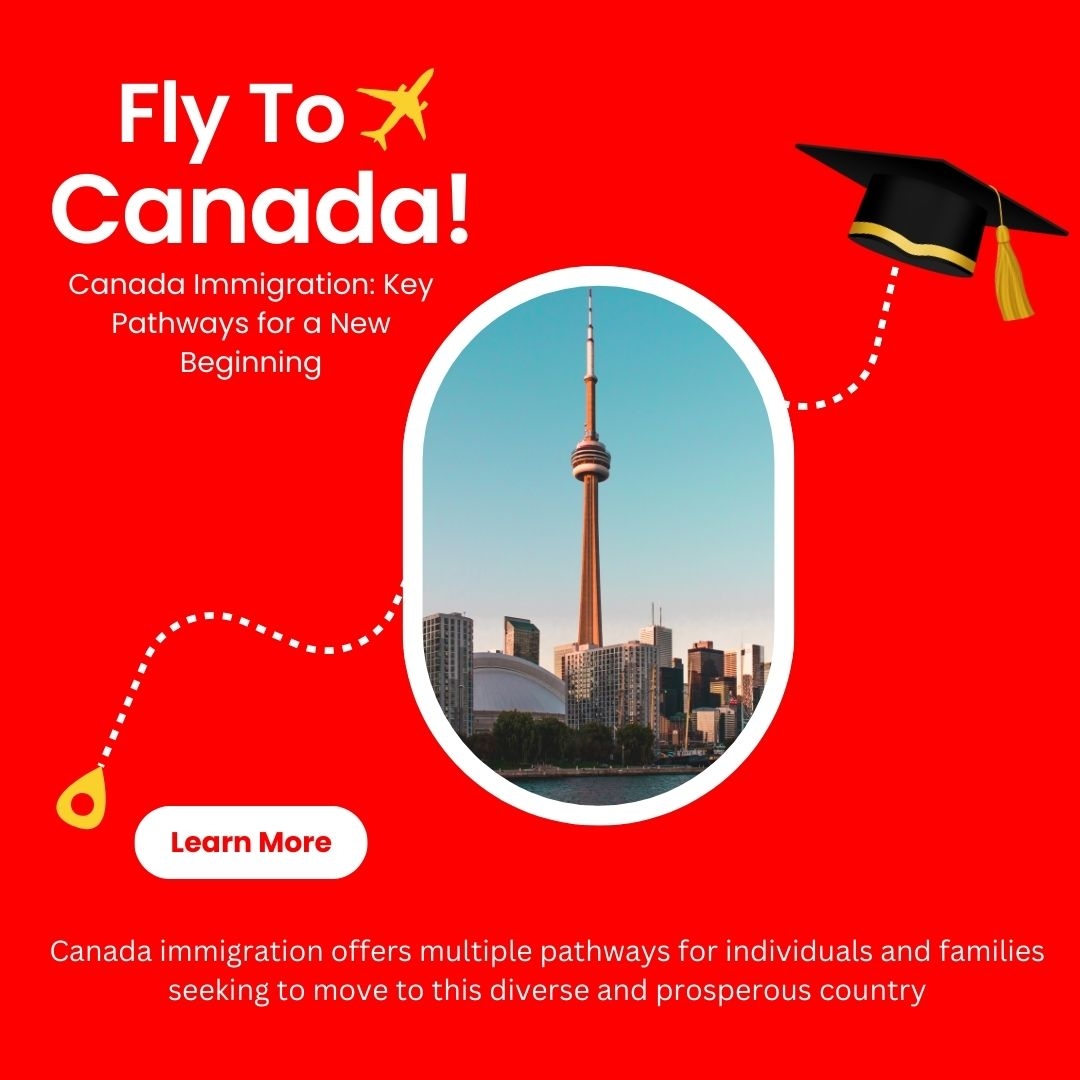A Comprehensive Guide to Securing Your Australia Permanent Residency Visa
Introduction
Australia is a dream destination for many, offering a high quality of life, diverse career opportunities, and a welcoming environment for immigrants. Securing an Australia Permanent Residency Visa is an essential step for those who wish to settle in the country long-term and enjoy the benefits it provides. In this guide, we explore everything you need to know about obtaining an Australia PR Visa, including the benefits, requirements, types of visas available, and tips for a successful application.
Why Choose an Australia Permanent Residency Visa?
An Australia PR Visa grants you the freedom to live, work, and study anywhere in Australia, while also providing access to public health care, education, and social security benefits. As a permanent resident, you can also sponsor eligible family members and eventually apply for Australian citizenship. This visa status opens doors to various professional and personal opportunities, making it an attractive choice for skilled professionals, students, and families.
Types of Australia Permanent Residency Visas
Australia offers several PR pathways designed for different types of applicants:
Skilled Independent Visa (Subclass 189): For skilled workers not sponsored by an employer, state, or family member. This visa operates on a points-based system and is highly sought after by professionals with in-demand skills.
Skilled Nominated Visa (Subclass 190): State-nominated skilled workers may apply for this points-tested visa. It offers more opportunities for those willing to settle in a specific state or territory.
Skilled Work Regional (Provisional) Visa (Subclass 491): Designed for individuals who wish to live and work in regional areas. After meeting residency and work requirements, holders can apply for PR.
Employer-Sponsored Visas: For those with a job offer from an Australian employer willing to sponsor their PR status, this pathway is ideal.
Family-Sponsored Visas: For partners, parents, and children of Australian citizens or permanent residents.
Eligibility Requirements
Eligibility for an Australia PR Visa varies by visa type but generally includes:
Meeting age requirements (usually under 45)
Proficiency in English (IELTS or PTE tests)
Holding relevant skills or qualifications for in-demand occupations
Achieving a minimum score on the points test (for skilled visas)
Meeting health and character standards, including police clearances
Application Process
The application process involves several key steps:
Skill Assessment: For skilled visas, your skills must be assessed by a relevant authority to ensure they align with Australian standards.
Expression of Interest (EOI): Lodge an EOI through SkillSelect, indicating your interest and qualifications for a PR visa.
Receive Invitation: If eligible, you may receive an invitation to apply.
Lodge Visa Application: Once invited, complete your PR visa application, providing required documents, fees, and any additional information requested.
Attend Medical and Police Checks: Submit proof of good health and character.
Wait for Decision: After submission, the Department of Home Affairs will review your application and make a decision.
Tips for a Successful Australia PR Visa Application
Stay Informed: Ensure you are up-to-date with the latest visa regulations and requirements.
Organize Your Documents: Have certified copies of all necessary documents ready, including your passport, educational certificates, and employment records.
Prepare for English Tests: If needed, aim to achieve a high score to maximize your points.
Consider State Sponsorship: If your occupation is in demand in certain regions, state sponsorship may increase your chances.
Seek Professional Guidance: An immigration consultant can provide expert insights, ensure compliance, and help avoid common pitfalls.
Conclusion
An Australia PR Visa is a golden opportunity to build a new life in one of the world’s most livable countries. With the right guidance and preparation, the journey to obtaining your PR can be smooth and rewarding. Whether you’re a skilled worker, entrepreneur, or family member, Australia’s PR pathways offer a secure and prosperous future. Start your application journey today and unlock a world of possibilities in Australia
Introduction
Australia is a dream destination for many, offering a high quality of life, diverse career opportunities, and a welcoming environment for immigrants. Securing an Australia Permanent Residency Visa is an essential step for those who wish to settle in the country long-term and enjoy the benefits it provides. In this guide, we explore everything you need to know about obtaining an Australia PR Visa, including the benefits, requirements, types of visas available, and tips for a successful application.
Why Choose an Australia Permanent Residency Visa?
An Australia PR Visa grants you the freedom to live, work, and study anywhere in Australia, while also providing access to public health care, education, and social security benefits. As a permanent resident, you can also sponsor eligible family members and eventually apply for Australian citizenship. This visa status opens doors to various professional and personal opportunities, making it an attractive choice for skilled professionals, students, and families.
Types of Australia Permanent Residency Visas
Australia offers several PR pathways designed for different types of applicants:
Skilled Independent Visa (Subclass 189): For skilled workers not sponsored by an employer, state, or family member. This visa operates on a points-based system and is highly sought after by professionals with in-demand skills.
Skilled Nominated Visa (Subclass 190): State-nominated skilled workers may apply for this points-tested visa. It offers more opportunities for those willing to settle in a specific state or territory.
Skilled Work Regional (Provisional) Visa (Subclass 491): Designed for individuals who wish to live and work in regional areas. After meeting residency and work requirements, holders can apply for PR.
Employer-Sponsored Visas: For those with a job offer from an Australian employer willing to sponsor their PR status, this pathway is ideal.
Family-Sponsored Visas: For partners, parents, and children of Australian citizens or permanent residents.
Eligibility Requirements
Eligibility for an Australia PR Visa varies by visa type but generally includes:
Meeting age requirements (usually under 45)
Proficiency in English (IELTS or PTE tests)
Holding relevant skills or qualifications for in-demand occupations
Achieving a minimum score on the points test (for skilled visas)
Meeting health and character standards, including police clearances
Application Process
The application process involves several key steps:
Skill Assessment: For skilled visas, your skills must be assessed by a relevant authority to ensure they align with Australian standards.
Expression of Interest (EOI): Lodge an EOI through SkillSelect, indicating your interest and qualifications for a PR visa.
Receive Invitation: If eligible, you may receive an invitation to apply.
Lodge Visa Application: Once invited, complete your PR visa application, providing required documents, fees, and any additional information requested.
Attend Medical and Police Checks: Submit proof of good health and character.
Wait for Decision: After submission, the Department of Home Affairs will review your application and make a decision.
Tips for a Successful Australia PR Visa Application
Stay Informed: Ensure you are up-to-date with the latest visa regulations and requirements.
Organize Your Documents: Have certified copies of all necessary documents ready, including your passport, educational certificates, and employment records.
Prepare for English Tests: If needed, aim to achieve a high score to maximize your points.
Consider State Sponsorship: If your occupation is in demand in certain regions, state sponsorship may increase your chances.
Seek Professional Guidance: An immigration consultant can provide expert insights, ensure compliance, and help avoid common pitfalls.
Conclusion
An Australia PR Visa is a golden opportunity to build a new life in one of the world’s most livable countries. With the right guidance and preparation, the journey to obtaining your PR can be smooth and rewarding. Whether you’re a skilled worker, entrepreneur, or family member, Australia’s PR pathways offer a secure and prosperous future. Start your application journey today and unlock a world of possibilities in Australia
A Comprehensive Guide to Securing Your Australia Permanent Residency Visa
Introduction
Australia is a dream destination for many, offering a high quality of life, diverse career opportunities, and a welcoming environment for immigrants. Securing an Australia Permanent Residency Visa is an essential step for those who wish to settle in the country long-term and enjoy the benefits it provides. In this guide, we explore everything you need to know about obtaining an Australia PR Visa, including the benefits, requirements, types of visas available, and tips for a successful application.
Why Choose an Australia Permanent Residency Visa?
An Australia PR Visa grants you the freedom to live, work, and study anywhere in Australia, while also providing access to public health care, education, and social security benefits. As a permanent resident, you can also sponsor eligible family members and eventually apply for Australian citizenship. This visa status opens doors to various professional and personal opportunities, making it an attractive choice for skilled professionals, students, and families.
Types of Australia Permanent Residency Visas
Australia offers several PR pathways designed for different types of applicants:
Skilled Independent Visa (Subclass 189): For skilled workers not sponsored by an employer, state, or family member. This visa operates on a points-based system and is highly sought after by professionals with in-demand skills.
Skilled Nominated Visa (Subclass 190): State-nominated skilled workers may apply for this points-tested visa. It offers more opportunities for those willing to settle in a specific state or territory.
Skilled Work Regional (Provisional) Visa (Subclass 491): Designed for individuals who wish to live and work in regional areas. After meeting residency and work requirements, holders can apply for PR.
Employer-Sponsored Visas: For those with a job offer from an Australian employer willing to sponsor their PR status, this pathway is ideal.
Family-Sponsored Visas: For partners, parents, and children of Australian citizens or permanent residents.
Eligibility Requirements
Eligibility for an Australia PR Visa varies by visa type but generally includes:
Meeting age requirements (usually under 45)
Proficiency in English (IELTS or PTE tests)
Holding relevant skills or qualifications for in-demand occupations
Achieving a minimum score on the points test (for skilled visas)
Meeting health and character standards, including police clearances
Application Process
The application process involves several key steps:
Skill Assessment: For skilled visas, your skills must be assessed by a relevant authority to ensure they align with Australian standards.
Expression of Interest (EOI): Lodge an EOI through SkillSelect, indicating your interest and qualifications for a PR visa.
Receive Invitation: If eligible, you may receive an invitation to apply.
Lodge Visa Application: Once invited, complete your PR visa application, providing required documents, fees, and any additional information requested.
Attend Medical and Police Checks: Submit proof of good health and character.
Wait for Decision: After submission, the Department of Home Affairs will review your application and make a decision.
Tips for a Successful Australia PR Visa Application
Stay Informed: Ensure you are up-to-date with the latest visa regulations and requirements.
Organize Your Documents: Have certified copies of all necessary documents ready, including your passport, educational certificates, and employment records.
Prepare for English Tests: If needed, aim to achieve a high score to maximize your points.
Consider State Sponsorship: If your occupation is in demand in certain regions, state sponsorship may increase your chances.
Seek Professional Guidance: An immigration consultant can provide expert insights, ensure compliance, and help avoid common pitfalls.
Conclusion
An Australia PR Visa is a golden opportunity to build a new life in one of the world’s most livable countries. With the right guidance and preparation, the journey to obtaining your PR can be smooth and rewarding. Whether you’re a skilled worker, entrepreneur, or family member, Australia’s PR pathways offer a secure and prosperous future. Start your application journey today and unlock a world of possibilities in Australia
0 Comments
0 Shares
2K Views
0 Reviews












